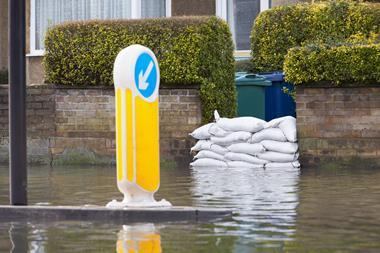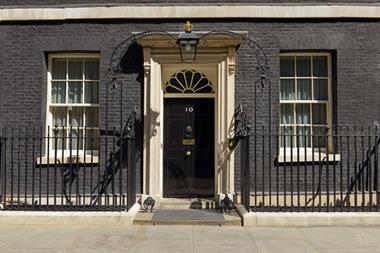Sponsored content: FloodFlash’s catastrophe risk analyst Henry Bellwood considers how man-made climate change is to blame for the rising disparity between total and insured losses and also considers what else is contributing to it
The global protection gap is the difference between the total economic losses resulting from various risks and the amount covered by insurance.
Pricewaterhouse Coopers (PwC) believes the global protection gap could reach $1.86trn by 2025, with flooding a key contributor. Hurricane Ian drove more than one third of natural catastrophe losses in 2022, according to Munich Re, while flooding in Pakistan and Australia caused further devastation.

Around 80% of the world’s catastrophic flood losses are uninsured, leaving people, businesses and governments exposed to bills that ruin lives.
Climate change often dominates the conversation around flooding. But is it truly the main factor behind the global protection gap?
To understand what’s causing the growing protection gap, we need to break risk down into its component parts – hazard, vulnerability and exposure.
Extreme weather
While no catastrophe is solely caused by climate change, scientists are increasingly certain man-made climate change is contributing to more extreme weather.
A recent study in the journal Nature Water confirmed the frequency and intensity of rainfall is increasing, with a strong link between this and global mean temperatures.
More intense flooding brings with it a higher potential for harm, loss, or damage – in other words, increases in the hazard. To cope with the rising costs, insurers impose excesses, raise premiums or exclude cover.
Man-made climate change does have an impact on one factor behind the global protection gap. The degree to which it is responsible for flood losses is less clear, though.
Put simply, to focus on climate change alone ignores the other two components of risk – exposure and vulnerability.

Humans have often settled in high-risk areas. Coastal and riverside locations have always been attractive to individuals and businesses.
Floodplains are fertile, providing benefits for agriculture and power for mills, while coasts provide access to trade routes. The percentage of the global population exposed to flooding has risen by almost a quarter since 2000.
This is due to population increase and because people continue to move towards rather than away from areas of risk. In England, one in 10 of all new homes built since 2013 are on land with a high flood risk, exposing more and more people to flooding.
Urban areas are far more vulnerable to flooding. Impermeable surfaces like concrete mean surface water builds up more quickly. Flood resilience measures work to reduce vulnerability – from raising a building on stilts, building flood barriers like the Thames Barrier to giving floodplains back to nature.
Considering hazard, vulnerability and exposure together, it becomes clear that climate change is just one piece of the flood risk puzzle.
Technological advances
The final ingredient in the protection gap is insurer appetite. Parametric solutions like FloodFlash help counter uncertainty about potential flood losses that leave people without cover.
They provide more certainty by developing policies that rely solely on the hazard dimension of a risk, expanding the provision of insurance.
The protection gap is therefore a problem, but also a massive opportunity for growth. We’re excited about the ideas and investment that will emerge to address the flood protection gap.

Hosted by comedian and actor Tom Allen, 34 Gold, 23 Silver and 22 Bronze awards were handed out across an amazing 34 categories recognising brilliance and innovation right across the breadth of UK general insurance.



















































No comments yet